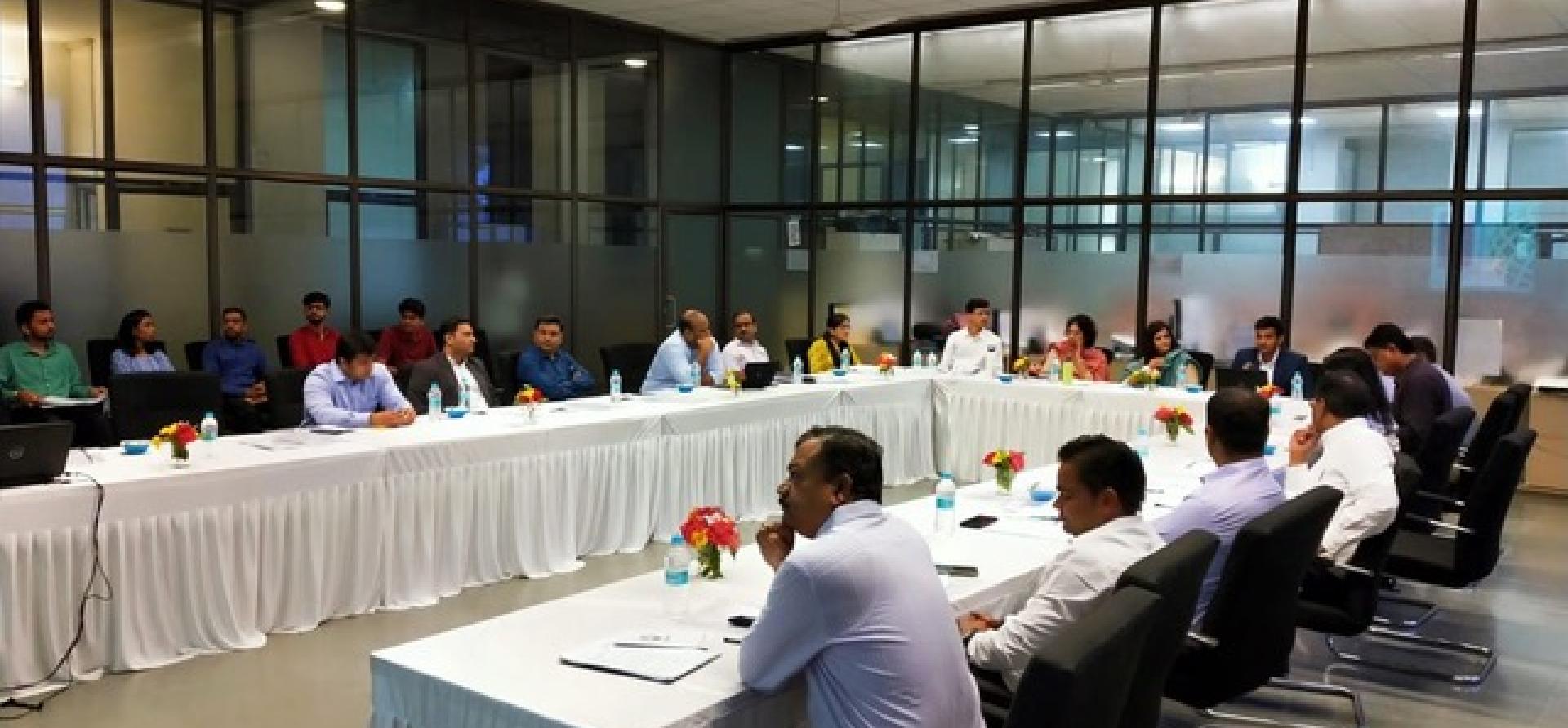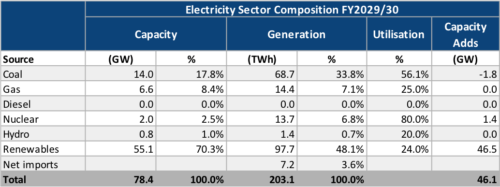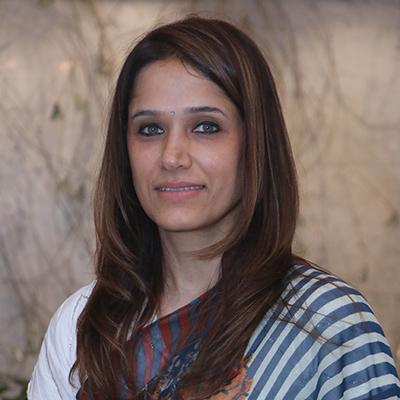IEEFA India: Roundtable explores grid integration challenges for renewable energy in Gujarat

Key issues pertaining to the transformation of Gujarat’s Electricity Sector were discussed at a roundtable organised by the Institute for Energy Economics and Financial Analysis (IEEFA), Climate Trends, and Gujarat Energy and Resource Management Institute (GERMI) at GERMI’s Gandhinagar campus on 27 August 2019.
 The workshop was attended by representatives from Gujarat Electricity Regulatory Commission (GERC), Gujarat Urja Vikas Nigam Ltd (GUVNL, the state-owned distribution company), Gujarat Energy Development Agency (GEDA), Tata Power, IIT-Gandhinagar and other industry experts, who contributed to an enriching discussion on the state’s electricity sector transition to a lower-cost, lower-emission, deflationary, more diversified and domestic resource-based electricity system.
The workshop was attended by representatives from Gujarat Electricity Regulatory Commission (GERC), Gujarat Urja Vikas Nigam Ltd (GUVNL, the state-owned distribution company), Gujarat Energy Development Agency (GEDA), Tata Power, IIT-Gandhinagar and other industry experts, who contributed to an enriching discussion on the state’s electricity sector transition to a lower-cost, lower-emission, deflationary, more diversified and domestic resource-based electricity system.
IEEFA launched its latest report at the workshop, entitled Gujarat’s electricity sector transformation – A Role Model of India’s Electricity Transition. The report identifies Gujarat as one of five leading Indian states for renewable energy in terms of both existing generation capacity as well as future potential.
GUJARAT IS ENDOWED WITH WORLD LEADING NATURAL, SUSTAINABLE RESOURCES – thus a preferred destination for developers vying for renewable energy contracts. In the last ten months, the state awarded 2.5 gigawatts (GW) of renewable energy (1.8GW of solar and 0.7GW of wind) in a deflationary tariff range of Rs2.44-2.95/kWh with 25- year contracts. Additionally, there is 1.5GW of capacity in the tendering process which will soon be awarded, to be commissioned within the 24-month deadline.
The report notes Gujarat has incurred a heavy cost in its recent bailout of stranded imported thermal coal capacity at Mundra. IEEFA notes there is currently no new greenfield construction of thermal power plants being proposed for Gujarat. About 3.9GW of end-of-life coal-fired capacity based on outdated technology is being gradually retired and will be partially replaced by upgraded supercritical combustion technology. IEEFA expects net negative capacity additions of 1.8GW on the thermal side by FY2029/30.
IEEFA models renewables additions accelerating to 4-5GW annually to ensure all of Gujarat’s incremental demand going forward is supplied by clean energy. This would be a dramatic shift in Gujarat’s electricity sector composition, with renewables forming 70% of its capacity and 48% of generation by 2029/30, potentially leading the country.
Figure 1: Gujarat Electricity Sector Composition FY2029/30
IEEFA’s report notes that a greater offtake of renewable energy power requires grid strengthening, significantly expanded interstate transmission capacity, and ideally, a stronger price signal for peaking power supply to reward fast ramping and flexible peak supply.
THE STATE IS BEST SERVED CONCURRENTLY PURSUING ALL VIABLE TECHNOLOGY SOLUTIONS for grid balancing: peaking gas; pumped hydro storage (PHS); utility scale and behind-the-meter batteries; faster ramping coal; solar thermal (CSP); demand response management (DRM); and grid interconnectivity. In addition, a time-of-day (ToD) pricing signal would better incentivise capital flows to time-shift variable renewables generation so it ‘kicks in’ at times of peak demand.
Following IEEFA’s presentation on Gujarat by IEEFA analyst Kashish Shah, and a second presentation on Renewables Grid Integration by IEEFA’s Vibhuti Garg, the roundtable enjoyed a highly nuanced panel discussion. Representatives from GUVNL’s research and development (R&D) team and GERC provided insights on the urgent need for frequency control and technical upgradation on transmission infrastructure.
Under the national discom (distribution company) reform scheme UDAY, the Energy Efficiency Corporation (EESL) of India has been rolling out smart meters that could support digitalisation of the transmission network. GUVNL’s R&D representatives emphasised an addition of new technology into the smart meters that could measure ‘power quality’. Other technical experts at the roundtable suggested the need for a transition to high capacity transformers, being crucial equipment for power generation.
IEEFA NOTES IT IS EXTREMELY IMPORTANT THAT SUPPORTING TRANSMISSION INFRASTRUCTURE IS EXPANDED and modernised concurrently with new renewables capacity deployment to preserve the value of assets, ensure grid stability and improve reliability, while also continuing to reduce grid loss rates.
Gujarat Energy Development Agency (GEDA), who have been working on a demand aggregation model on behalf of state-owned discoms to roll out large-scale rooftop solar capacity for its residential segment in Gujarat, talked about their focus on improving quality standards for rooftop solar installations and remote monitoring of rooftop solar generation. GEDA are considering ways to incentivise quality improvements either through offering upfront capital subsidies or better tariff structures to developers.
The roundtable discussed the imminent need for battery storage capacity going forward to rapidly incorporate large amounts of variable renewable energy for grid stability and balancing. Whilst there is no doubt that most of the growth in renewables will come from utility-scale solar plus on- and off-shore wind parks, there should be adequate focus on solar pumps for the agricultural sector and self-sustainable micro-grid projects for rural areas in Gujarat. Farmers with solar irrigation pumps can effectively play the role of prosumers and effectively provide demand side management during peak hours in a more cost-effective manner, if provided adequate incentives (to offset the distortion of imported diesel fuel subsidies).
GERC ALSO EMPHASIZED THE NEED FOR PRICING TOOLS TO DEVELOP THE ANCILLARY SERVICE MARKET to handle the variability of renewable energy. IEEFA understands a real-time energy market with gate closure (one hour before the time of operation) is to be introduced in Gujarat and the existing ancillary services framework is to be further strengthened and graduated to a market-based mechanism.
The roundtable strengthened IEEFA’s confidence in the state of Gujarat’s ambition to transition to a low-cost, low-emission electricity sector to support its rapid industrial and economic growth. Open markets with favourable policy support will progressively ensure key challenges pertaining to the continued modernisation, expansion and decarbonisation of Gujarat’s energy economy can be addressed.
IEEFA thanks GERMI and Climate Trends for co-organising this successful seminar.
Vibhuti Garg is IEEFA’s Energy Economist and Kashish Shah is a research analyst with IEEFA India.













